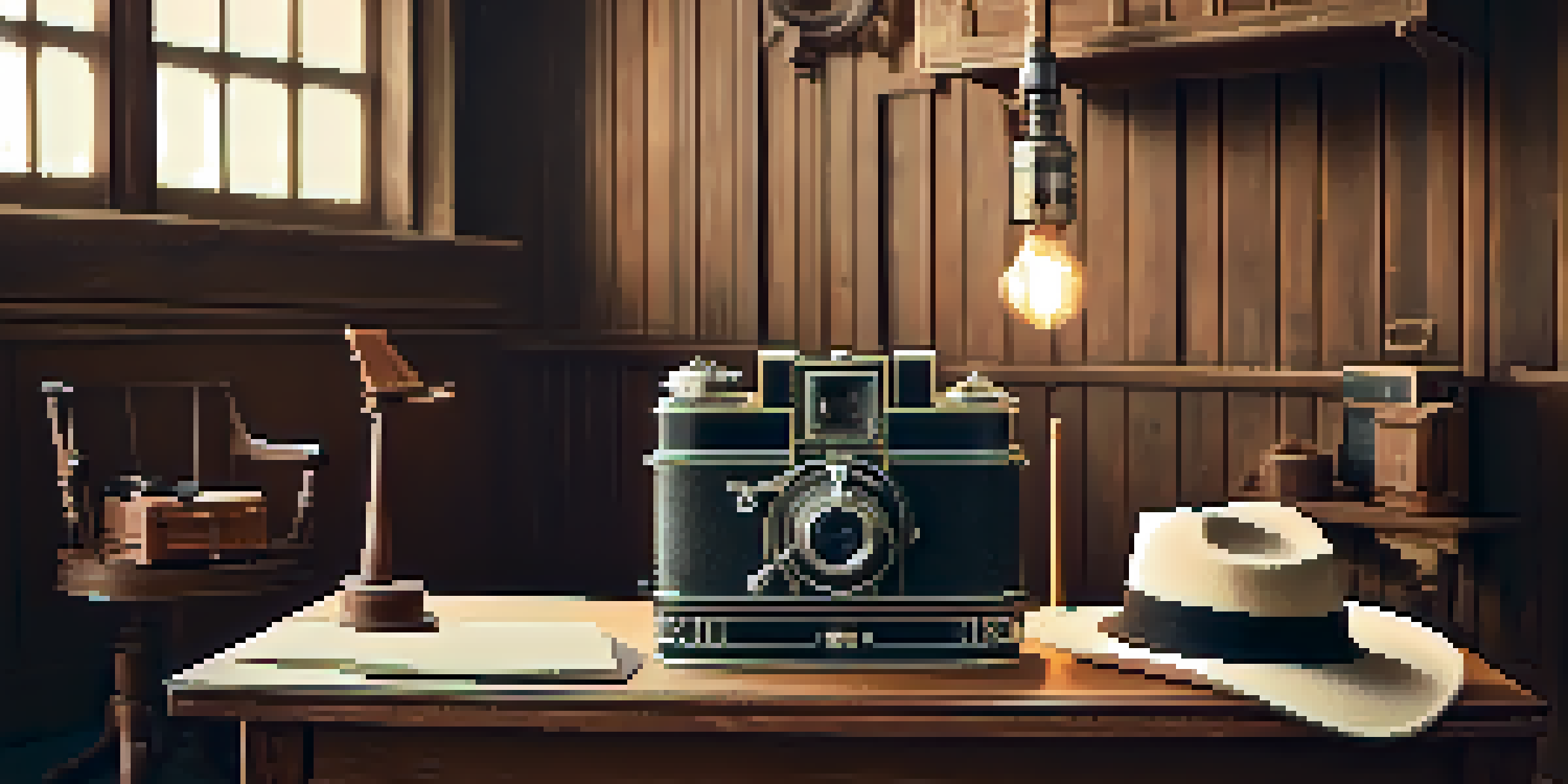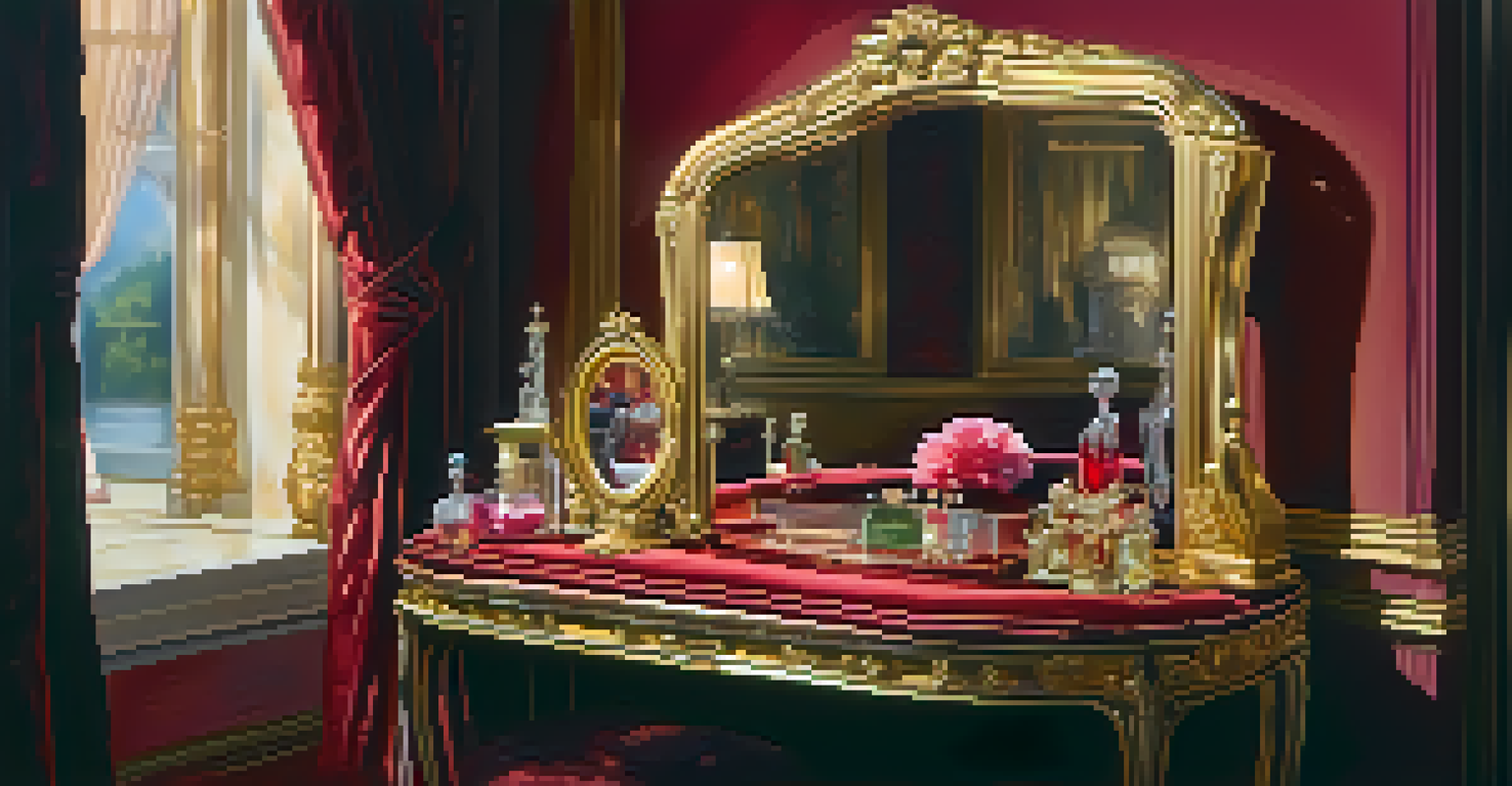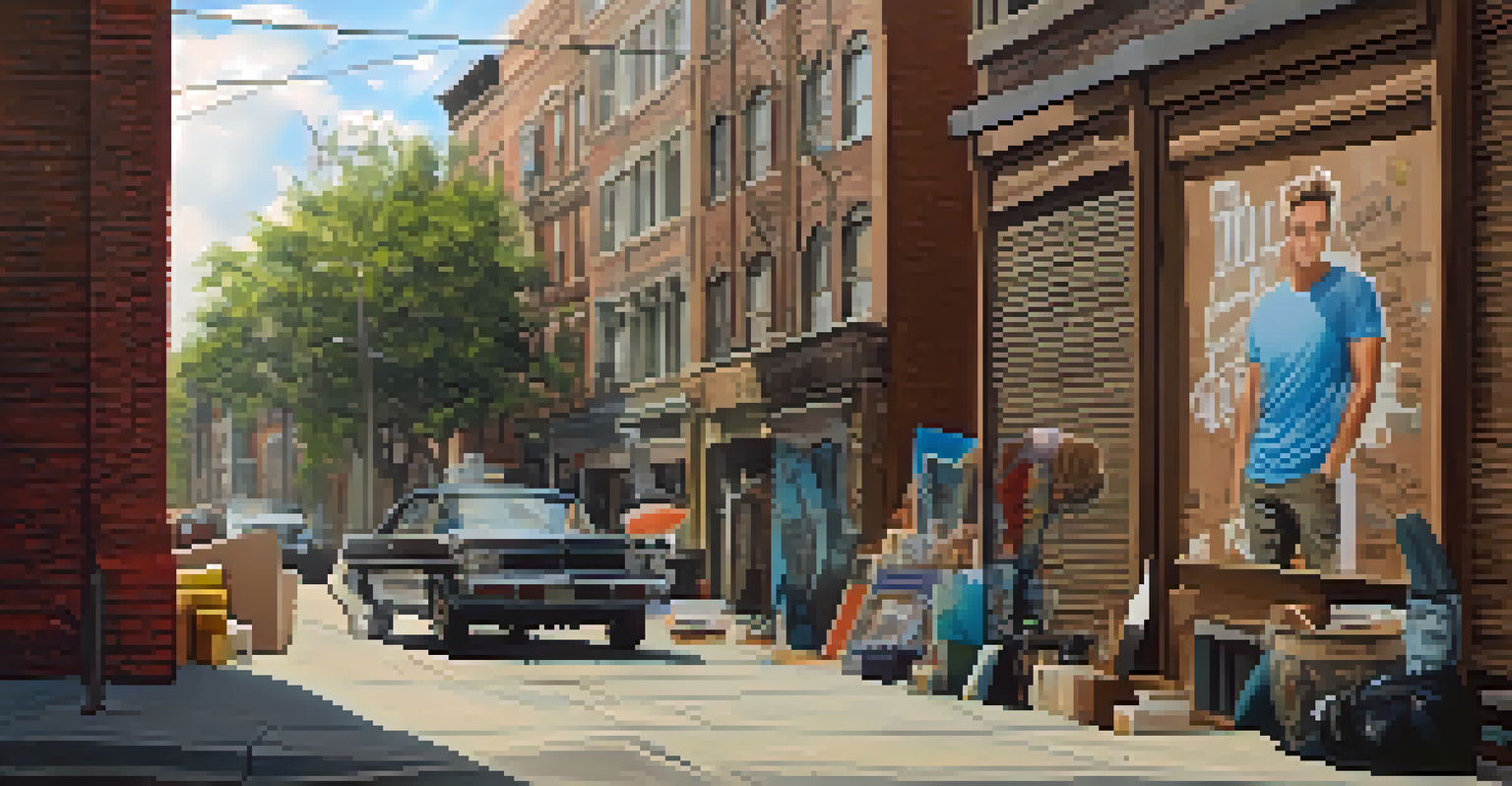The Evolution of Props in Film: A Historical Perspective

The Early Days: Props as Simple Tools in Silent Cinema
In the early days of cinema, particularly during the silent film era, props were largely functional. They served a practical purpose, helping to tell a story without the aid of dialogue. For instance, a simple hat could signify a character's profession or status, while a gun could heighten tension in a scene.
Props are not just things; they are the unsung heroes of storytelling that bring a film to life.
Props were often rudimentary, crafted from materials that were easily accessible, like wood or fabric. Filmmakers had to be resourceful, creating items that would convey meaning without overt explanation. This necessity led to innovative uses of everyday objects, making audiences engage with the film on a deeper level.
As the technology of filmmaking evolved, so did the complexity of props. They began to take on more elaborate designs and artistic qualities, setting the stage for the future of props in film.
The Golden Age of Hollywood: Props as Symbols of Glamour
During Hollywood's Golden Age, the use of props transformed dramatically. They became symbols of glamour and sophistication, often enhancing the allure of the film. Think of the iconic glass slipper in 'Cinderella' or the luxurious gowns in 'Gone with the Wind'—props were not just tools; they told stories of opulence.

This era saw the rise of prop departments, with skilled artisans dedicated to creating stunning, intricate items. The craftsmanship reflected the high production values of the time, allowing filmmakers to build immersive worlds that captivated audiences.
Props Evolve from Function to Art
Throughout cinema history, props have transformed from simple tools serving practical story purposes to intricate symbols enhancing character development and visual storytelling.
Props started to play a more significant role in character development, too. A character's choice of weapon, for instance, could reveal much about their personality and intentions, making props essential storytelling devices.
The Rise of Realism: Props in the 1960s and 70s
The 1960s and 70s marked a shift towards realism in filmmaking, with props following suit. Filmmakers began to prioritize authenticity, ensuring that props accurately reflected the time period and environment of their stories. This attention to detail made films more relatable and believable.
Every prop tells a story, and the best ones are the ones that resonate with our own experiences.
Movies like 'The Graduate' and 'Easy Rider' utilized everyday objects to ground their narratives in reality. The use of contemporary props, from cars to clothing, helped audiences connect with characters on a personal level, enhancing the emotional impact of the films.
This era also saw an increase in the use of props as tools for social commentary. For instance, the use of a simple piece of furniture could symbolize broader societal issues, weaving deeper layers into the narrative.
The Blockbuster Era: Props as Marketing Tools
As the blockbuster era took off in the late 1970s and 80s, props began to serve a dual purpose: enhancing the film and acting as marketing tools. Iconic props from films like 'Star Wars' and 'Indiana Jones' became cultural phenomena, often leading to merchandise and collectibles.
This trend highlighted how props could transcend their roles within the film, becoming symbols of fandom and nostalgia. A lightsaber, for example, is not just a prop; it embodies a whole universe of adventure and imagination.
Indie Filmmaking: Creativity Over Cost
In indie films, filmmakers often utilize everyday items in innovative ways, demonstrating that impactful storytelling doesn't require a big budget.
The marketing prowess of these props showcased their importance beyond storytelling, making them integral to a film's commercial success and audience engagement.
Modern Innovations: Technology and Prop Design
In recent years, technological advancements have revolutionized prop design and usage. Digital effects and 3D printing have allowed filmmakers to create hyper-realistic props that were once unimaginable. This evolution opens up new avenues for creativity and storytelling.
For instance, films like 'Avatar' and 'The Lord of the Rings' utilize digital props that blend seamlessly with live-action. Such innovations not only enhance visual storytelling but also expand the possibilities of what props can represent.
Moreover, filmmakers can now design props that interact with the environment in real-time, allowing for dynamic storytelling that keeps audiences engaged and on the edge of their seats.
The Role of Props in Indie Films: Creativity on a Budget
In the world of indie filmmaking, props often reflect creativity and resourcefulness. With limited budgets, filmmakers must think outside the box, using everyday items to craft compelling narratives. This necessity can lead to innovative and unique prop designs that stand out.
For example, a simple cardboard cutout can become a poignant symbol in a low-budget drama, proving that it's not about the cost of the prop but the thought behind it. This approach often resonates with audiences, making indie films relatable and impactful.
Sustainable Props for the Future
The film industry is increasingly adopting eco-friendly materials and practices in prop design, reflecting a commitment to sustainability alongside creativity.
The ingenuity of indie filmmakers showcases how props can still play a vital role in storytelling, regardless of budget constraints, emphasizing creativity over extravagance.
The Future of Props: Sustainability and Innovation
Looking ahead, the future of props in film is likely to be influenced by sustainability. As the film industry becomes more aware of its environmental impact, there's a growing trend towards using eco-friendly materials and practices in prop design. This shift not only benefits the planet but can also inspire innovative solutions.
Filmmakers are beginning to experiment with biodegradable materials and repurposed items, showing that sustainability can coexist with creativity. This approach can lead to unique prop designs that tell a story of their own, reflecting contemporary values.

As technology continues to evolve, we can expect even more exciting developments in the world of props, paving the way for a new era of storytelling that prioritizes innovation and environmental consciousness.